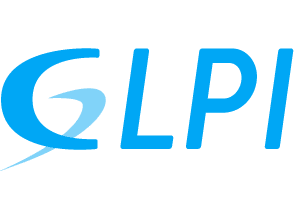by Alexandre Delaunay | Mar 17, 2018 | Features
Features
GLPI has a hierarchical knowledgebase
- You can Write articles with the WYSIWYG editor integrated.
- Management of article’s translations
- Restriction to a number of participants (entity, group, user)
- Validate of articles
- Management of article’s revisions
- Link articles with inventory items and tickets
- Use in the Services Catalog of the Forms Plugin
An FAQ is also available, which is a subset of the knowledge base for end users.
by Alexandre Delaunay | Mar 17, 2018 | Features
GLPI offers software asset management (SAM).AUTOMATED INVENTORYCombined with tools like FusionInventory or OCS Inventory NG, GLPI is a powerful solution for managing software and licenses.Automatic inventory of installed software:
- Windows
- Mac OS X
- Linux and BSD
- UNIX (AIX, Solaris, HP-UX)
- Report the installation number and software version
- Platform installations
CATEGORIZATION OF SOFTWAREGLPI offers the ability to create software categories and assign them automatically.
- Rules engine for assigning categories to software
- Visualize all software by category
- Automatic possible category from the FusionInventory inventory (component, hotfix, security update, application, etc.)
by Alexandre Delaunay | Mar 17, 2018 | Features
GOOD’S LIFE CYCLE
You can enter the dates corresponding to important actions on the life of an element.
GLPI can be configured to inform these dates automatically (change of status of the good, reception of the material, etc).
GuaranteeFill out the warranty information of your devices, and receive alerts once expired.FINANCIAL MANAGEMENTSet budgets and associate the materials with them.
You can see in real time the consumed and remaining resources on each setup budget.
GLPI calculates the total cost of ownership (TCO) of the property.CONTRACTS, SUPPLIERS, AND CONTACTSFill out property information required for the maintenance such as supplier or contracts.
Keep track billing, including asset information.DocumentsStore documents associated with the goods acquired (invoices, delivery note, technical documentation, etc.).
by Alexandre Delaunay | Mar 17, 2018 | Features
AVOID DUPLICATED DATA
GLPI has native mechanisms to control the quality of the inventory data, improve the work of the fleet manager, as well as the accuracy of the statistics.
The administrator declares the rules to control that the goods are unique, the system refuses the insertion or updating of duplicate data.
DICTIONARY
Dictionaries are rule engines for rationalize inventory data imported into GLPI.
Example with the Adobe manufacturer without setting up dictionaries:
Example after setting up the dictionary:
by Alexandre Delaunay | Mar 17, 2018 | Features
Key features
GLPI provides numerous advanced features for inventory and asset management:
- Asset inventory: computers, screens, printers, network equipments, devices and phones
- Detailed view of assets, with their connections and network ports
- Complete historical for each asset modification
- Operating system management (name, version, edition, kernel, license, etc)
- Installed software management
- Internal components management
- Network components inventory, remote port connection (IP address, MAC address, VLAN, network outlet, etc)
- Asset lifecycle management (from stock to withdraw)
- Virtualization (host to vm relation, operating system, software)
- Datacenters management (rooms, enclosures, racks, PDUs)
- Inventory of printers, cartridges and consumables
- Certificates management
- Telephony management: lines, phones, simcards
- Assets reservation
- Network discovery and local inventory using FusionInventory or OCS Inventory plugins
by Alexandre Delaunay | Mar 16, 2018 | Features
The service assistance module of GLPI meet the specified standards of ITIL v2, the most widely accepted best practice framework for service management software. Combines categorization, escalation, service level agreement, impact, urgency, priority calculation, status standardization, validation request at several levels, and the implementation of automatic workflows based on business policies.DOCUMENTATION OF INCIDENTS AND SERVICE REQUEST (TICKETS)
- A simplified user interface or a service-oriented interface (requires a plugin)
- Timeline for ticket processing
- See the life cycle of an incident or service request (assignment, planning, validation, tasks, follow-ups, solution, etc.)
- Create and update tickets via e-mail, GLPI IMAP / POP fetching media
- Valuable data of your assets: Total cost of ownership, hardware failures monitoring, etc.
- Predefined ticket templates for incidents, service requests, solutions, and pre-filled tasks.
- Support availability management (opening and closing hours)
Knowledgebase linked to tickets that can automatically escalate problems, changes or projects
- Customized forms generator
- Automatic workflow engine based on complex business rules
- Management of Service Level Agreement (SLA), Service Level Targets (SLT) and Operational Level Agreement (OLA)
- Satisfaction surveys after closing the ticket
PROBLEM MANAGEMENT
- Problem creation from multiple sources: form, incident, change, park asset
- Problem impact analysis, evaluate symptoms and find their causes
- Follow the progress until a final valid solution
- Feed the knowledgebase with valuable data of known errors
- Cost traceability for schedules and materials
CHANGE MANAGEMENT
- Create changes from incidents, requests, or problems
- Analysis, planning, solution
- Link changes with the knowledgebase
- Link changes to inventory items
- Expense Management
